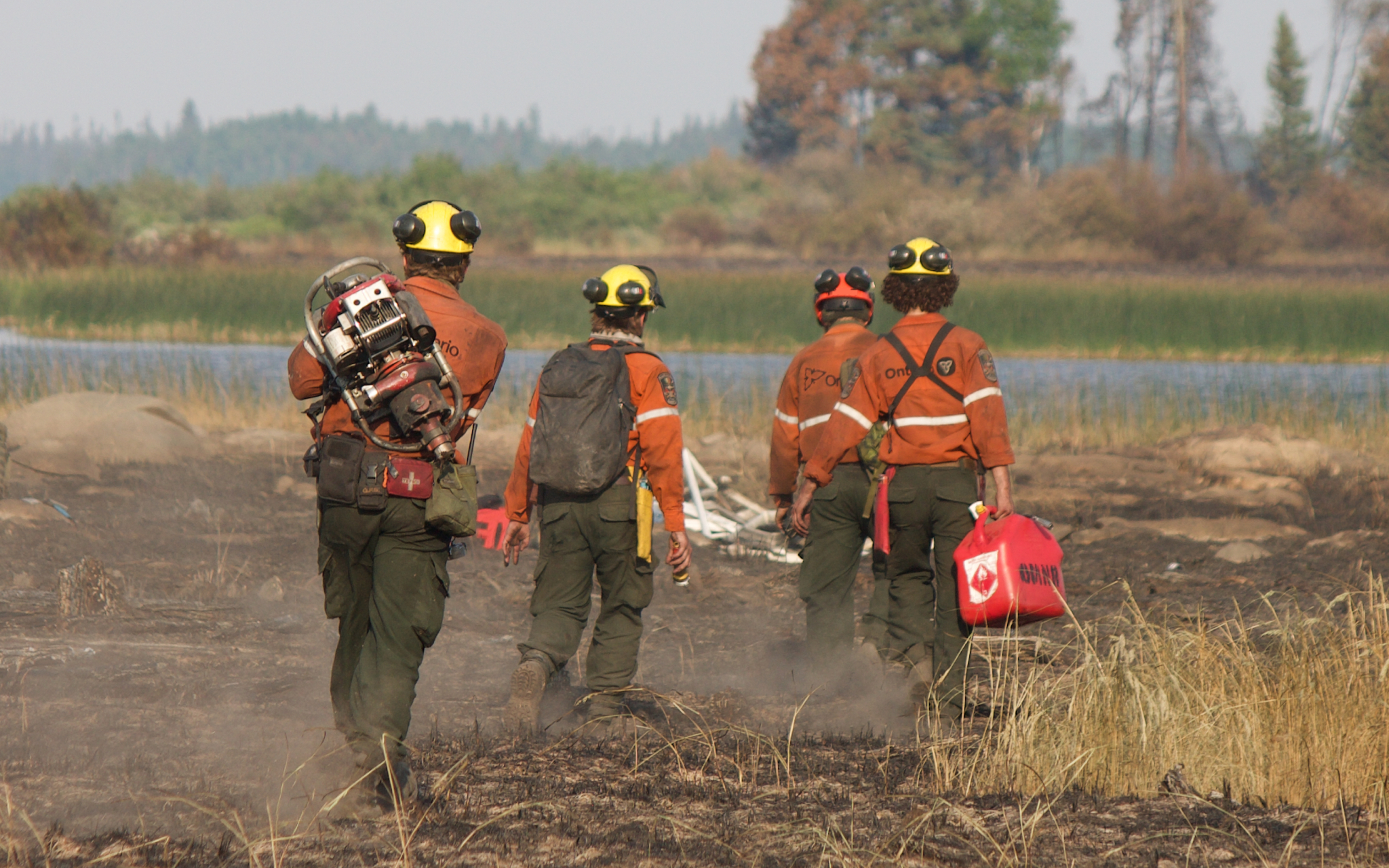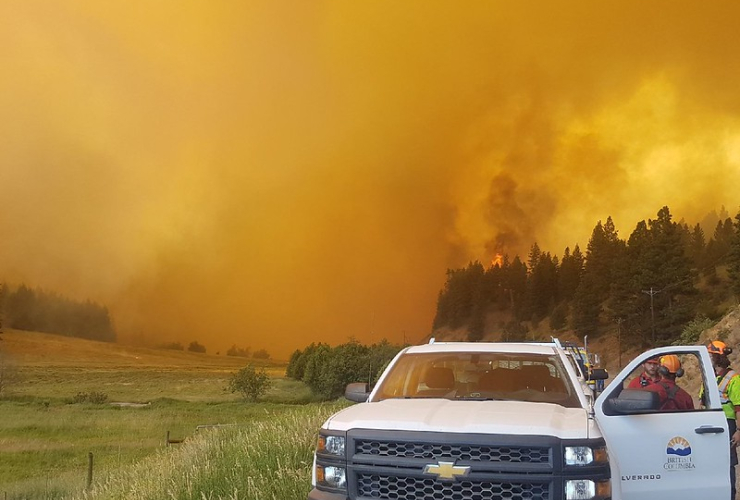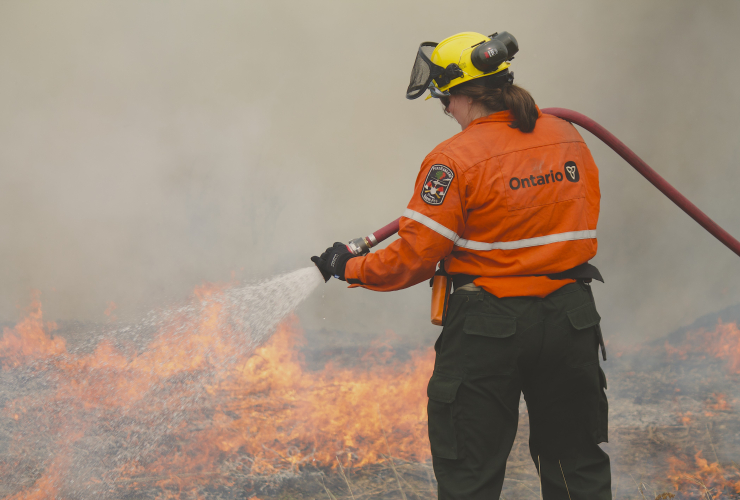First, a bit of history to give you an idea of the dangers Canadian forest firefighters face as we gear up for another wildfire season.
In 1775, a surgeon at St. Bartholomew’s Hospital in London discovered that chimney sweeps were developing testicular cancer from dermal exposure to soot. This discovery was pivotal in understanding how occupational exposure to carcinogens, specifically polycyclic aromatic hydrocarbons (PAHs), leads to cancer.
According to the federal government’s toxic substances list, forest fires are “the single most important producer of PAHs” in the country; however, PAHs are just one ingredient in the carcinogenic cocktail.
Wildfire smoke is a mix of particulate matter (PM), ozone, ammonia, carbon monoxide, nitrogen dioxide, PAHs, volatile organic compounds — the list goes on. During days when these chemicals choked cities across North America, Ontario’s forest firefighters were on the front lines wearing nothing but bandanas for protection.
As American forest firefighters became increasingly concerned for their health in the 1990s, and whether their bandanas were protecting them, their government sought answers.
In 1994, the U.S.’s National Institute of Occupational Safety and Health released a scientific report definitively stating that bandanas provide zero respiratory protection from “the particulate and gaseous compounds generated by a forest fire.”
So why do Ontario’s young forest firefighters still wear bandanas in 2024? Because Doug Ford’s government trains them to.
Despite warnings from health agencies around the world, including the World Health Organization (WHO) and the federal government, the Ontario premier has taken the position of uncertainty and quiet denial.
While Health Canada clearly says that smoke exposure can lead to “heart attack, stroke and premature death,” Ontario’s Ministry of Health told the public last summer that exposure to smoke “can be harmful” and have “cardiovascular outcomes.” This web page has since been taken down.
The Ministry of Natural Resources, responsible for protecting Ontarians from wildfires, also has a web page with smoke safety information, however, the only advice presented is to breathe “air closest to the ground through a moist cloth.”
Ontario’s forest firefighters are also taught to “stay low to the ground” when fighting forest fires, and they are not trained on the devastating health impacts of smoke exposure despite legal requirements under the Occupational Health and Safety Act.
Recently, forest firefighters authored a 20-page report using internal documentation to prove that the Ford government has known about the toxicity of fire emissions for years, and formally requested better training regarding these hazards.
Meanwhile, Ontario continues to deny that forest firefighters get cancer and other occupational diseases by excluding them from presumptive health-care benefits given to urban firefighters.
Just three weeks ago, the provincial NDP put forward amendments to the Working for Workers Four Act, which would have provided forest firefighters with the same presumptive health coverage given to urban firefighters; the Ford government voted this amendment down.
While the Ford government continues to ignore its forest firefighters’ cries for help, staff have found themselves stuck looking to other provincial governments for guidance.
According to Sarah Henderson, scientific director of environmental health with the British Columbia Centre for Disease Control, particulate matter (PM2.5), which penetrates through the lungs into the bloodstream, can effectively be mitigated with a well-fitted N-95 mask.
Research from the WHO also shows that “PAHs in air pollution are primarily found bound to PM.” This suggests that a well-fitted N-95 mask could help protect front-line forest firefighters from PM2.5, as well as the carcinogenic hydrocarbons that bind to them.
When Henderson was asked what the science says about Ontario forest firefighters wearing bandanas, her answer was absolute: “A bandana does not do anything.”
With the discovery of occupational carcinogens associated with wood burning in the 1700s, it’s no wonder why U.S. forest firefighters were concerned about their health in 1994.
Thirty years later in 2024, retired forest firefighters are being diagnosed with — and dying of — cancers and heart disease at an unknown rate because the Ford government continues to deny that these diseases could be a result of their years of service.
With the extent of climate change to be determined, and the definition of record-breaking fire seasons yet unknown, Ontario still does nothing to inform or protect its forest firefighters from smoke on the front lines. Instead, this government has taken the approach that if they ignore it, maybe it will get better. Unfortunately for us, cancer, and climate change, doesn’t work that way.
If you were a forest firefighter in Canada and have since been diagnosed with a disease that your doctor has attributed to your years of service, or are their surviving family, please contact [email protected]
Noah A. Freedman is the vice-president of Ontario Public Service Employees Union Local 703 and a forest fire crew leader for the province of Ontario.






Comments